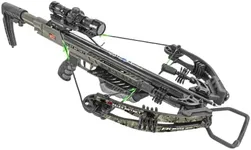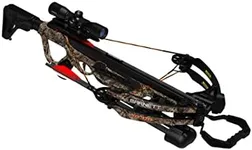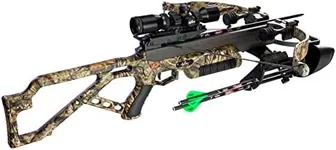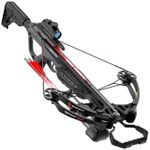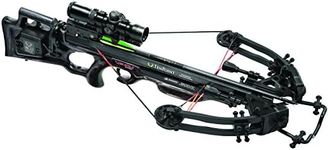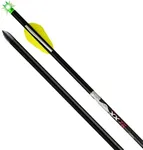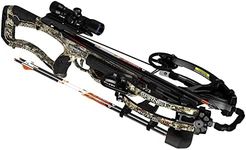Buying Guide for the Best Hunting Crossbows
Choosing the right hunting crossbow can make a big difference in your hunting experience. It's important to think about what kind of game you plan to hunt, your physical strength, and your experience level. The right crossbow should feel comfortable, be easy to handle, and match your hunting style. Understanding the key specifications will help you narrow down your options and find a crossbow that fits your needs.Draw WeightDraw weight is the amount of force required to pull back the string and cock the crossbow. This is important because it affects the power and speed of your shot. Lower draw weights (around 150 lbs or less) are easier to handle and suitable for beginners or small game, while higher draw weights (up to 200 lbs or more) provide more power for larger game but require more strength to cock. Choose a draw weight that you can comfortably manage while still being effective for your intended hunting targets.
Arrow Speed (FPS)Arrow speed, measured in feet per second (FPS), tells you how fast the arrow will travel when shot. Faster speeds (350 FPS and above) are better for longer distances and larger game, as they provide more kinetic energy and a flatter trajectory. Slower speeds (250-300 FPS) are easier to control and may be sufficient for close-range hunting or smaller animals. Consider the typical distance and type of game you plan to hunt when deciding on the right speed.
Weight of the CrossbowThe weight of the crossbow affects how easy it is to carry and maneuver, especially during long hunts. Lighter crossbows (under 7 lbs) are easier to carry and handle, making them a good choice for hunters who move a lot or hunt in rough terrain. Heavier crossbows (over 8 lbs) may offer more stability and less recoil but can be tiring to carry for extended periods. Think about your hunting style and physical endurance when choosing the right weight.
Size and LengthThe overall size and length of a crossbow determine how easy it is to handle in different environments. Compact crossbows are easier to maneuver in tight spaces like dense woods or blinds, while longer crossbows may offer better accuracy but can be cumbersome in close quarters. If you hunt in thick brush or from a tree stand, a shorter, more compact crossbow may be best. For open areas, a longer crossbow can be considered.
Trigger MechanismThe trigger mechanism affects the smoothness and safety of your shot. A crisp, light trigger pull helps with accuracy, while a heavier or rougher trigger can make it harder to shoot consistently. Some crossbows also have safety features to prevent accidental firing. If you value precision, look for a crossbow with a smooth, predictable trigger. If safety is a top concern, check for built-in safety mechanisms.
Cocking MechanismThe cocking mechanism is how you draw the string back to prepare the crossbow for shooting. Manual cocking requires more strength, while assisted mechanisms like rope cockers or crank devices make it easier and more consistent. If you have limited upper body strength or want to reduce effort, look for crossbows with assisted cocking systems. If you prefer simplicity and don't mind the effort, manual cocking may be sufficient.
Noise LevelNoise level refers to how loud the crossbow is when fired. Quieter crossbows are less likely to spook game, which is especially important for hunting wary animals. Some crossbows have built-in dampeners or other features to reduce noise. If you hunt skittish animals or in areas where silence is crucial, prioritize a quieter crossbow. If noise is less of a concern, this may be a lower priority.
Scope and SightsScopes and sights help you aim more accurately. Some crossbows come with basic sights, while others include more advanced scopes with magnification and illuminated reticles. If you plan to hunt at longer distances or in low light, a better scope can make a big difference. For close-range hunting or beginners, simple sights may be enough. Consider your experience level and typical hunting conditions when choosing the right sighting system.


